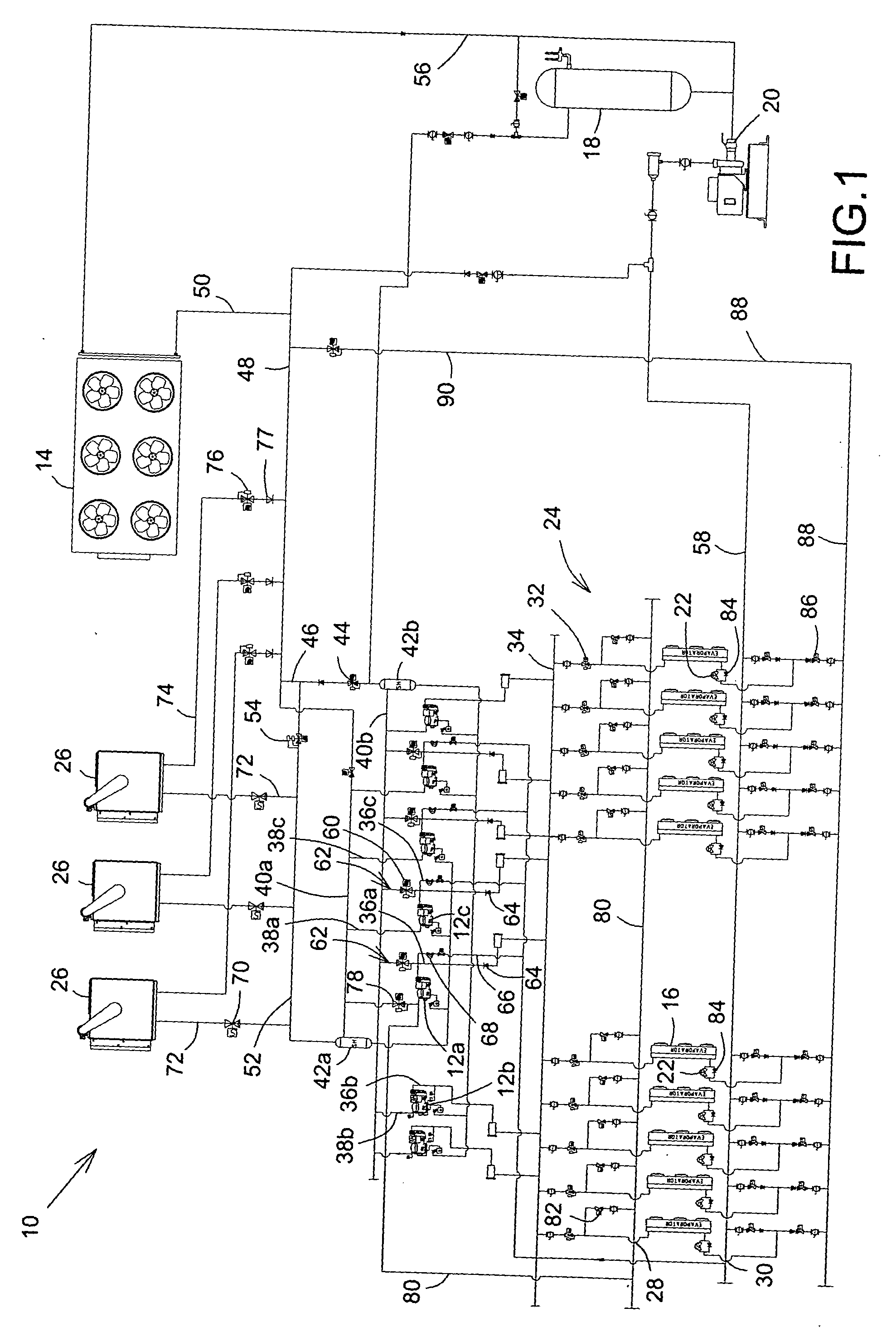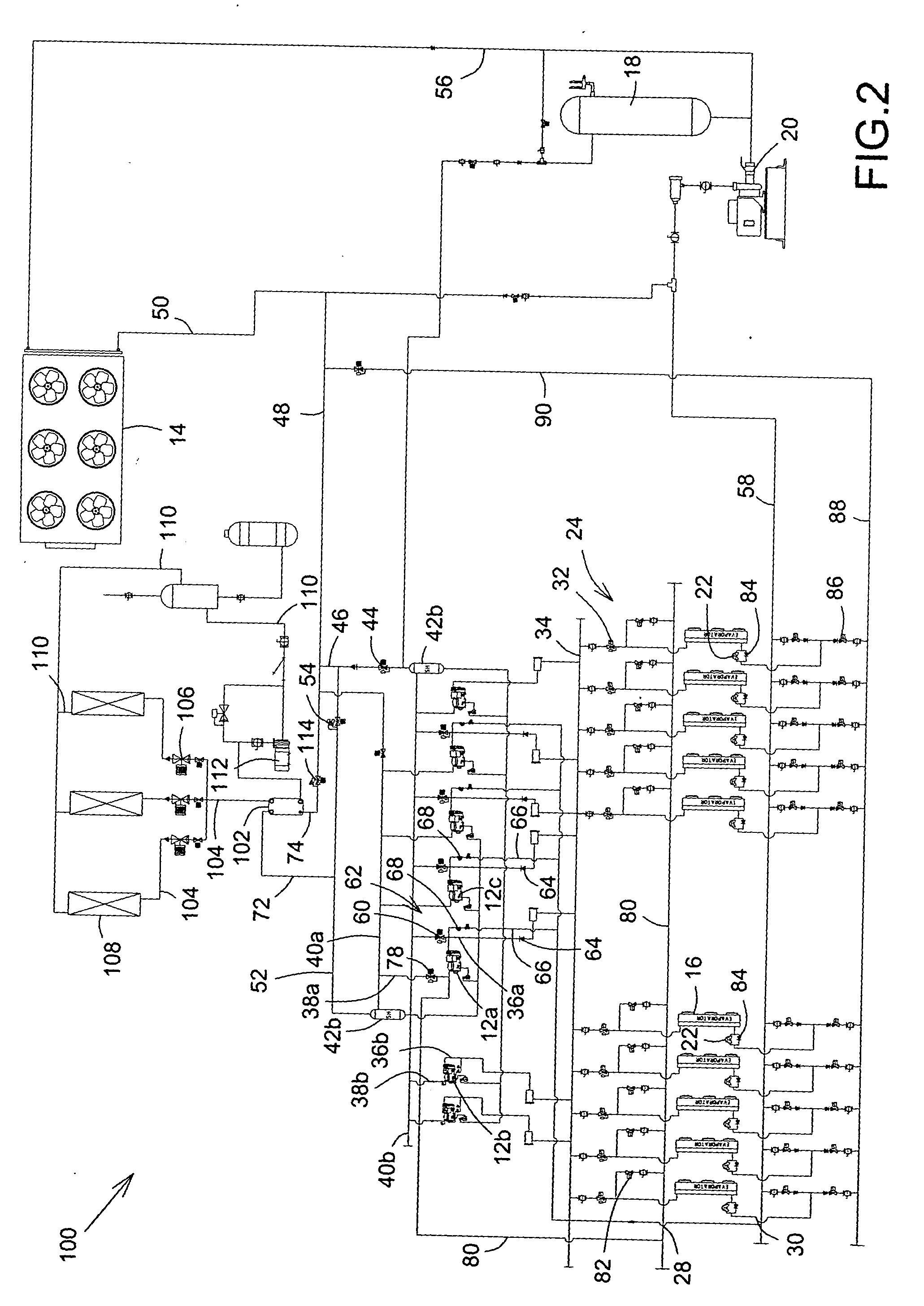Heat reclaim refrigeration system and method
a refrigeration system and heat recovery technology, applied in the field of heat recovery refrigeration systems and methods, can solve the problems of low condensing pressure, waste of energy, and insufficient pressure of refrigerant liquid to properly, so as to improve the reclaim of latent heat, save energy, and use less energy.
- Summary
- Abstract
- Description
- Claims
- Application Information
AI Technical Summary
Benefits of technology
Problems solved by technology
Method used
Image
Examples
Embodiment Construction
[0021] Reference is now made FIG. 1, a schematic diagram of a heat reclaim refrigeration system, shown generally as 10, having an outdoor air-cooled condenser as refrigerant condensing means and air-to-refrigerant heat reclaim coils as a heat reclaim means, in accordance with a first embodiment of the present invention. Broadly speaking, the system 10 includes two or more compressors 12, an outdoor air-cooled condenser 14 as a refrigerant condensing means, evaporators 16, a refrigerant liquid receiver 18, a refrigerant liquid pump 20, one or more refrigerant expansion valves 22, and a network, shown generally as 24. The network 24 includes a variety of conduits, also referred to as passageways or lines, valves and manifolds, through which the refrigerant liquid pump 20, the evaporators 16, the compressors 12, and the air-cooled condenser 14 are interconnected to circulate the refrigerant. In the embodiment, heat reclaim means, namely refrigerant-to-air heat reclaim coils 26, are als...
PUM
 Login to View More
Login to View More Abstract
Description
Claims
Application Information
 Login to View More
Login to View More - R&D
- Intellectual Property
- Life Sciences
- Materials
- Tech Scout
- Unparalleled Data Quality
- Higher Quality Content
- 60% Fewer Hallucinations
Browse by: Latest US Patents, China's latest patents, Technical Efficacy Thesaurus, Application Domain, Technology Topic, Popular Technical Reports.
© 2025 PatSnap. All rights reserved.Legal|Privacy policy|Modern Slavery Act Transparency Statement|Sitemap|About US| Contact US: help@patsnap.com



